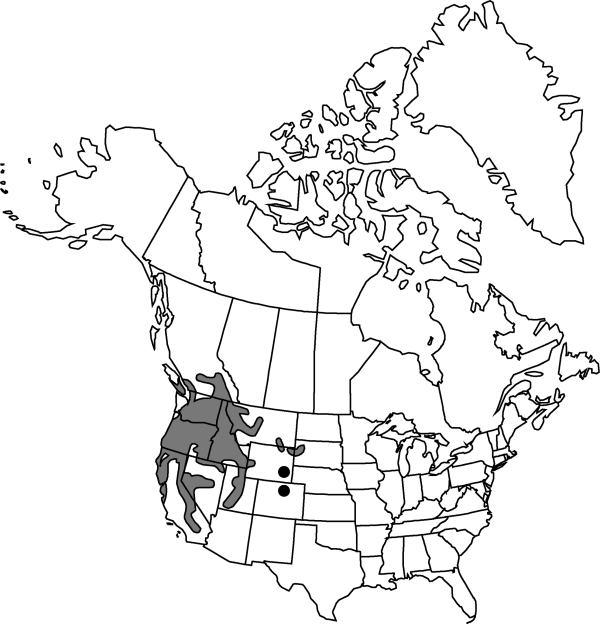Claytonia rubra
Contr. U.S. Natl. Herb. 25: 188. 1925.
Plants annual, sometimes overwintering and biennial, with minute, shortened, tuberous bodies; periderm absent. Stems 1–10 cm. Leaves: basal leaves in flattened to suberect rosettes, 0.5–6 cm, blade with strong red pigmentation even in juvenile plants, narrowly rhombic to ovate, spatulate, or trullate, 0.5–1.5 × 0.5–1 cm, apex obtuse; cauline leaves distinct or connate on 1 side or perfoliate, sessile, blade ovate. Inflorescences 1-bracteate; bract leaflike, 0.5–15 mm. Flowers 2–5 mm diam.; sepals 1.5–2.5 mm; petals 2–3 mm, pinkish white to white; ovules 3. Seeds 2–3 mm diam., shiny and smooth; elaiosome 1–2 mm. 2n = 12, 24, 36.
Distribution

B.C., Calif., Colo., Idaho, Mont., Nev., Oreg., S.Dak., Utah, Wash., Wyo.
Discussion
Subspecies 2 (2 in the flora).
Selected References
None.
Key
| 1 | Basal leaf blades trullate; cauline leaves distinct or perfoliate | Claytonia rubra subsp. rubra |
| 1 | Basal leaf blades lanceolate, spatulate, rhombic, or ovate; cauline leaves usually connate on only 1 side or perfoliate | Claytonia rubra subsp. depressa |